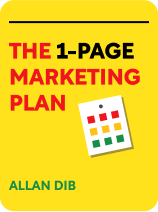

This article is an excerpt from the Shortform book guide to "The 1-Page Marketing Plan" by Allan Dib. Shortform has the world's best summaries and analyses of books you should be reading.
Like this article? Sign up for a free trial here .
How can you get more customer referrals? What can you do to encourage people to recommend your brand?
Focusing on existing customers should be a key part of your marketing strategy. This involves getting your customers excited about your brand and encouraging customer referrals.
Here are some easy ways you can encourage customer referrals.
Encouraging Customer Referrals
Marketing expert Allan Dib says that if you want customer referrals, you first have to get your customers excited about your brand. You could do this by giving them an extraordinary customer experience that they won’t forget.
Dib notes that most businesses stop marketing to a customer once she buys something—however, this way of thinking limits business growth. Developing customers into superfans generates ongoing revenue and can help you launch new products because superfans will test the products and evangelize for them. Importantly, making your existing customers happy will also lead to customer referrals.
1. Get Your Customers Excited
Dib repeats an often-quoted statistic that people are 21 times more likely to buy from a business they’ve already bought from than one they haven’t bought from. So you’re leaving money on the table if you don’t tap into their potential long-term value.
(Shortform note: Dib recommends calculating customer lifetime value or CLV—how much money a customer will bring to your brand throughout their time as a paying customer. The basic formula is: average order value x purchase frequency x average retention time in years. However, there are different formulas and variations, and it gets complicated. Although Dib recommends calculating CLV, he doesn’t explain how to apply these numbers in your marketing strategy. Other strategists say knowing your CLV can help you increase profits by identifying your most valuable customers, profiling them, and focusing on building that segment.)
Dib offers these strategies for getting more profit from existing customers (that is, increasing their lifetime value to your company). This approach will ultimately lead to more customer referrals:
- Increase prices: Many businesses are afraid to raise prices. But Dib argues that if you’ve built a trusting relationship, positioned yourself as an expert, and delivered a great experience, most customers will accept price increases.
- Bundle: Bundle additions with the primary product. For instance, with a new laptop, sell a mouse, chargers, keyboard protector, and a carrying case for a new laptop.
- Upgrade: Get existing customers to upgrade by buying higher-priced, higher-margin products and services.
- Automate: Get customers to buy more often by sending automated reminders for such things as vehicle servicing. Consider a subscription service. Or, get them to come back by offering vouchers or freebies for spending a certain amount or buying a certain quantity.
- Restart: Get lapsed customers to come back and buy with a gift card or coupon.
(Shortform note: There are many other ways to increase customer lifetime value or purchases, including: Create unexpected and delightful surprises such as birthday coupons, give extensive product details (which increases the likelihood of buying), personalize the shopping experience, provide multiple ways to return items, reward loyalty, and create frequent buyer programs and exclusive offers.)
2. Get Them to Make Customer Referrals
The final step in creating enthusiastic superfans is prompting customer referrals. Dib stresses that hoping for referrals isn’t enough—to get consistent customer referrals, you need a system for generating them. He recommends several approaches:
- Actively solicit referrals from customers who’ve had great experiences with you. While businesses are often reluctant to ask for referrals for fear of sounding desperate, Dib says customers don’t view them as a favor to you—they make referrals to friends when they think it will make them look good. So along with asking for a referral, offer them a gift card or discount card to give to a friend or associate. To be more systematic, let customers know during the sales process that they’ll have a great experience and you’d like them to make referrals.
- Set up a mutual referral system with a related business—for instance, if you’re a financial planner, an accountant or insurance agent could refer their customers to you and vice versa.
(Shortform note: Additional ways to generate referrals include: Make the experience so compelling that customers want to share it, leverage LinkedIn to identify effective referrals, create a customer referral program, and offer incentives for referrals.)

———End of Preview———
Like what you just read? Read the rest of the world's best book summary and analysis of Allan Dib's "The 1-Page Marketing Plan" at Shortform .
Here's what you'll find in our full The 1-Page Marketing Plan summary :
- How to create a marketing plan using a simple template
- A guide to the three customer-focused phases of marketing
- How to create enthusiastic superfans—and why they're essential






